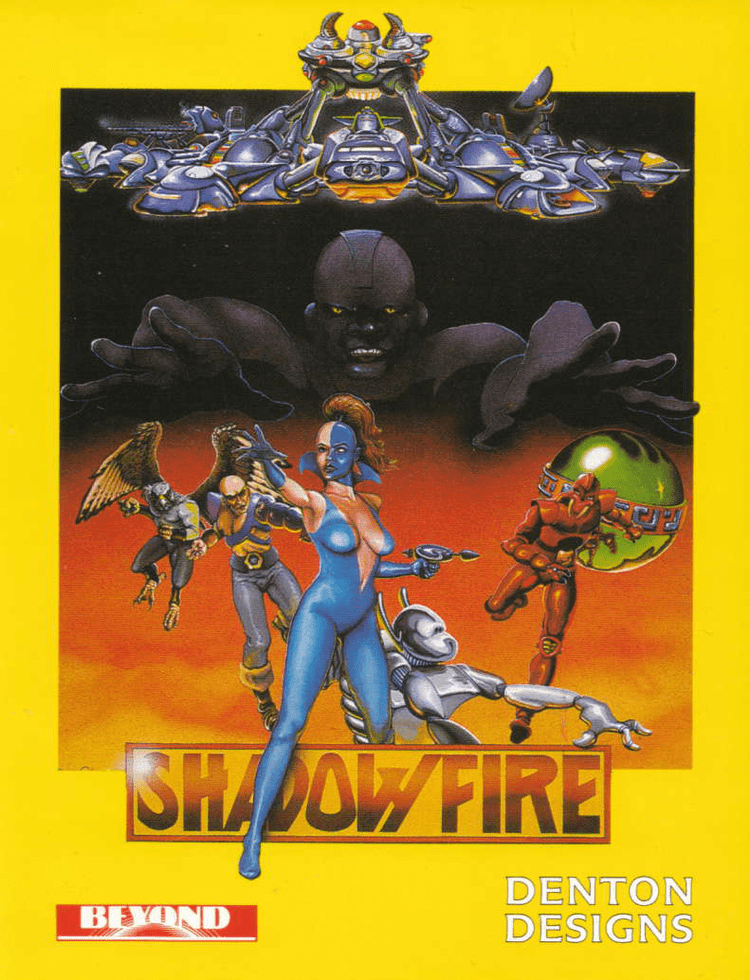Genre(s) Adventure / RPG Initial release date April 1985 | Mode(s) Single-player Awards Best Adventure | |
 | ||
Similar Denton Designs games, Adventure games | ||
Shadowfire is a computer game for the Sinclair ZX Spectrum and Commodore 64. It was developed by British developer Denton Designs and was published by Beyond Software in 1985. Shadowfire is notable as one of the first games to use a menu-and-icon-driven interface, even with a lightpen. It was followed by a sequel, Enigma Force, in 1986.
Contents
Plot
General Zoff, a traitor to the Empire is holding Ambassador Kryxix captive in his spaceship. Plans for a new type of spaceship (the Shadowfire of the games title) are contained in a micro-disc hidden in the Ambassador's spine. If Zoff gets the plans, the empire will be in great danger, and it is only a matter of time until his inquisitors will discover them. The Emperor has assembled the Enigma Force, a group of six operatives who are "...the cream of the Empire's legions, the worst of its criminal scum or the latest development in cybernetics." Your task is to rescue Kryxix, capture Zoff and destroy or capture his starship the Zoff V.
Gameplay
Players take control of all six characters and have one hour and forty minutes of realtime to rescue Ambassador Kryxix and capture General Zoff. All six characters have different abilities. Syylk is an insectoid and a strong fighter; Zark Montor, the team leader, is an expert in unarmed combat and the only translator of the group - meaning that Kryxix will only follow Montor; Sevrina Maris is the only character who can pick locks; Torik is an avian with thorough knowledge of explosives - and the fastest moving character; Maul is a slow combat droid; and Manto is a weak droid, but the only team member that can operate the transporter that is vital for the mission's success.
Controls are completely icon based and the screen is divided into six sections. The upper screen section is called the mission command screen and displays which character is active, the active character's location and the status of all characters: whether they are moving, engaged in combat, weak or dying or performing certain action such as picking locks. The lower half of the screen changes depending on the situation and shows additional information and all selectable actions.
From the main game screen (Enigma Force screen) players can choose one of the six characters and access four sub-screens:
Game/manual inconsistencies
Both the manual and the game are not always helpful towards the player:
Reception
The game was well-received on both released platforms, gaining a 96% Crash Smash for the ZX Spectrum version, and a 91% ZZap Sizzler award for the Commodore 64 version. The innovative interface, multi-character gameplay and atmospheric music by Fred Gray were also favourably commented upon.
Shadowfire was unique at the time in that it was released with the ZX Spectrum version on one side of the cassette, and the Commodore 64 version on the other side. This ensured that Shadowfire rode high in the individual format charts, as both Spectrum & C64 sales counted as one, increasing the perceived popularity.
Sequel
The game was followed up by a sequel in 1986, named Enigma Force which featured a more arcade orientated style of gameplay. Whereas Shadowfire was entirely icon based, Enigma Force allowed the player to directly control the reduced list of characters, and play as an arcade game.
